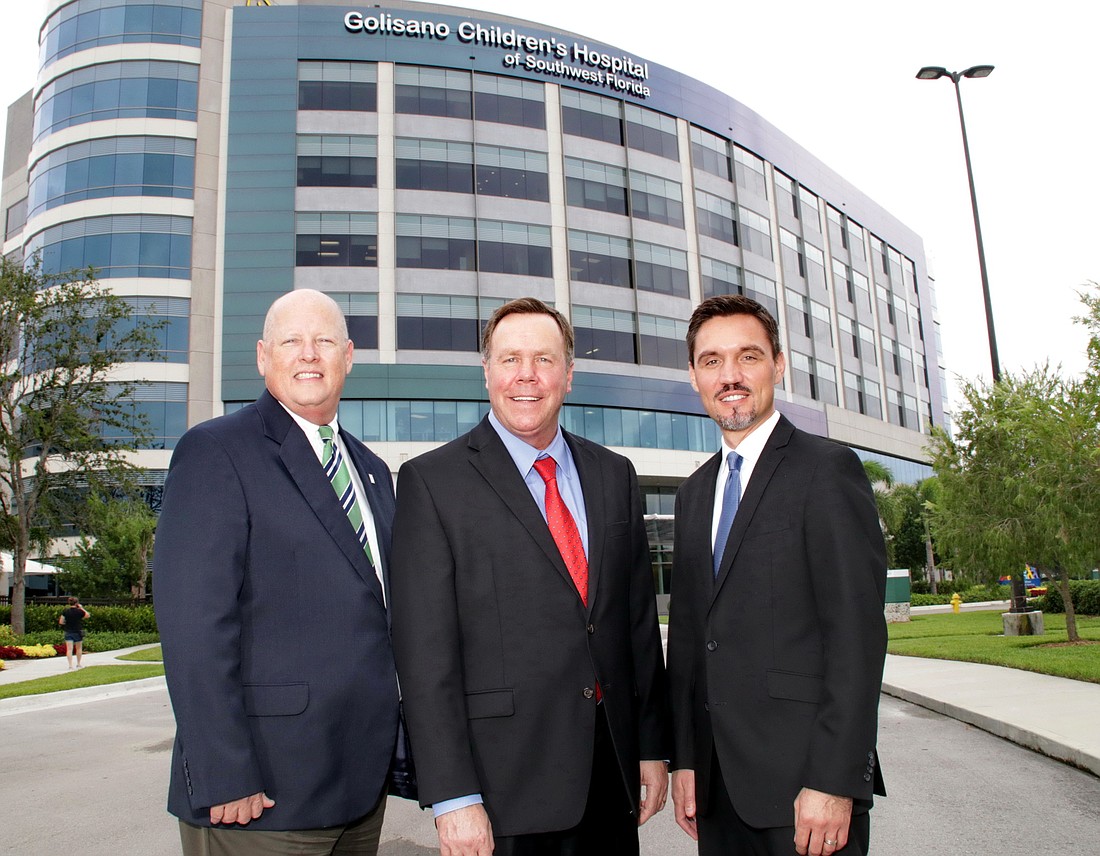Founded in 1938, St. Petersburg-based Harvard Jolly Architecture has survived for eight decades in the competitive field of architecture thanks to the strength and diversity of what President and COO Ward Friszolowski calls its four-legged stool: design work for health care facilities, universities, schools for kindergarten through 12th grade and government projects such as police stations and libraries.
Such buildings are what make communities work, and thus they need to endure. But they also need to be designed for the future, which makes Harvard Jolly’s work challenging. In Florida, codes and regulations for municipal buildings are updated every few years, which means the firm's architectural staff are often linked with engineers for a holistic approach to bringing projects out of the ground.
'There’s a growing awareness that architecture makes a difference, both from a client’s public image standpoint as well as how their customers feel about and experience a building.' Ward Friszolowski, Harvard Jolly Architecture
In other words, gone are the days of the architect as auteur, practicing his or her craft in isolation and unveiling, with artistic flourish, a build-ready design. The business has become so collaborative, Friszolowski says, that Harvard Jolly employs its own engineers and has contractors on payroll to help with the budgeting process.
“Time and money are the two items that are constantly part of the conversation,” says Friszolowski, who’s also active in local politics, having served as a St. Pete Beach city commissioner, as well as mayor of the beach community. “Our ability to hit the nail on the head on those two items, through our experience and our staff, is probably what sets us apart.”
The Harvard Jolly name has been on a slew of recently opened high-profile projects in the region, from the Golisano Children’s Hospital in Fort Myers to the James Museum of Western and Wildlife Art and the University of South Florida’s Kate Tiedemann College of Business, both in St. Petersburg. The firm also provided architectural services for the new St. Petersburg Police Department headquarters under construction.
“That four-legged stool has served us very well over time," Friszolowski says, "because the projects are all pretty diverse.”
As demand for the firm’s design work has grown, so too has revenue. Between 2012 and 2015, for example, revenue rose 91.3%, from $11.08 million to $21.2 million. The company has mostly kept up the momentum, with $25.4 million in 2016 and $24.2 million in 2017 revenue.
“There’s a growing awareness that architecture makes a difference, both from a client’s public image standpoint as well as how their customers feel about and experience a building,” Friszolowski says. “That doesn’t always translate into clients wanting to pay more, but it’s nice to know that we are a valued service.”
Harvard Jolly’s run of success has enabled it to expand its reach across Florida, with satellite offices in Fort Myers, Jacksonville, Orlando, Sarasota, Tallahassee, Tampa and West Palm Beach. The privately held company is employee-owned, with 30 shareholders and some 95 employees.
Friszolowski says Harvard Jolly is unusual in its field because a large percentage of its staff — about a third — is made up of registered architects.
“To juxtapose that, it wouldn’t be unusual for an architecture firm of 20 to 50 people to have only one, two or three registered architects,” he says. “But we can guarantee quality because we have registered architects on your project. It might cost us more in terms of salaries, but we get qualified people.”
Factoring in the firm’s number of registered interior designers and landscape architects, about half the firm’s staff consists of licensed professionals directly involved in revenue-generating client work as opposed to support roles and other overhead line items.
Harvard Jolly’s cash flow, though, isn’t entirely derived from government and nonprofit work. It provided architectural services for the Sundial, Bill Edwards’ retail and entertainment complex in downtown St. Petersburg, and it also does some residential work.
But the four-legged stool model means the firm is well positioned to endure downturns in various sectors.
One sector doing particularly well of late for Harvard Jolly is for-profit health care facilities, including in the mental and behavioral health area. Such projects represent a big challenge, says Friszolowski, because of safety design requirements. “We are getting opportunities to do a lot more specialized behavioral health facilities,” Friszolowski says. “The for-profit side of the health care sector has really sought us out.”
(The first paragraph of this story has been updated to better reflect the full range of projects that Harvard Jolly Architecture has worked on.)






